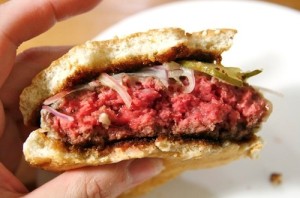Maybe Pete Snyder could weigh in.
Nah, let him enjoy retirement.
But the UK Institute of Food Research (IFR) has been undertaking research for the Food Standards Agency to establish if the cooking technique sous vide is safe. Sous vide uses lower temperatures to improve food quality and could be a step closer to being more  widely adopted after Institute of Food Research scientists assessed the steps needed to ensure the process is safe.
widely adopted after Institute of Food Research scientists assessed the steps needed to ensure the process is safe.
Sous vide cooking involves vacuum packing food in a plastic pouch and then heating in a water bath. Chefs are attracted to the precise nature of the temperature control, allowing innovative use of the technology to create new textures and flavours by manipulating the behaviour of food components such as proteins, starches and fats. In designing new recipes and processes, microbial safety is paramount and much data has been collected on how well food poisoning bacteria grow and survive in different foods at different temperatures. This data has been collected together and made available through ComBase, a BBSRC-supported National Capability based at IFR. Food manufacturers and academics regularly consult ComBase’s extensive database of microbial growth information.
Recently, there has been an increase in the number of sous vide foods being cooked at lower temperatures, e.g. 42°C to 70°C.Most data on microbial growth in food is based on temperatures below 40°C, with studies focusing on how bacteria grow at ambient temperatures, for example during storage. Other studies have looked at the temperatures at which bacteria are killed, usually around 55-60°C and above. Lack of information in the range of about 40 to 60°C makes it very difficult for cooks, manufacturers, regulators and enforcement officers such to calculate the lethality of such low temperature heat treatments and judge the risk of foods containing pathogens.
To address this issue Dr Sandra Stringer and colleagues at the IFR, which is strategically funded by BBSRC, have gathered the information needed to properly assess the hazards associated with lower temperature cooking. The scientists also carried out a feasibility study on extending models in the ‘Combase Predictor’ database. Specifically they investigated how much work would be needed to upgrade the ComBase database to model the hazards E. coli, Salmonella and L. monocytogenes between around 40 and 60°C. This would help ensure that the safety assessment for sous vide foods is consistent, effective and commensurate with any risk to public health.
